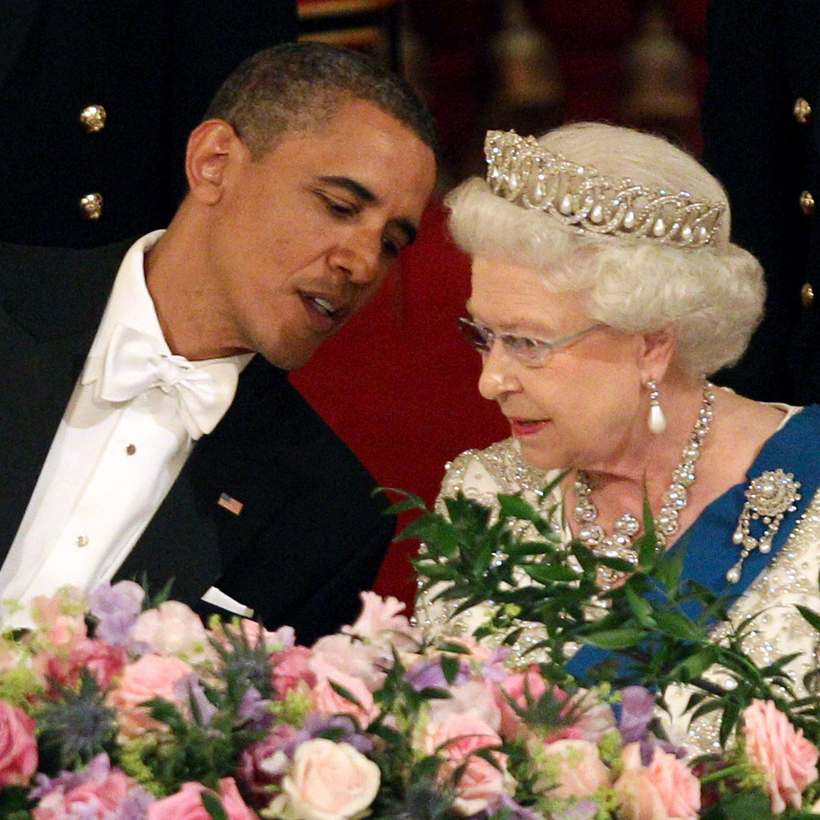It’s not easy being Queen.
As the world breathlessly watches, U.S. presidents come calling at the castle, sometimes for a brief visit over a pot of Earl Grey, sometimes for a state dinner, occasionally—if they find particular favor—for a sleepover.
These commanders in chief don’t always have command of the niceties. But you are the Queen so you adroitly paper over any and all of their protocol lapses—walking ahead of you, for instance. Raising a glass at the wrong time. Or, perhaps, these leaders have a worldview that you don’t share. Of course, you stay mum, ma’am.

But, to a man, they are charmed by you and eager to have a relationship with you, actually, a “special relationship” (the term coined by Winston Churchill to describe the unique ties between the United States and the United Kingdom). They use that phrase in toasts and speeches. You echo those sentiments in your own toasts and prepared remarks.
Such is the essence of Royal Audience, an engaging if over-methodical account by David Charter, the U.S. assistant editor of The Times of London, of Elizabeth II’s interactions with the many White House residents who came and went during her long reign.

She gave Dwight Eisenhower her recipe for scones. She and Ronald Reagan went horseback riding together at Windsor Castle. Reagan reciprocated with lunch at his ranch, in California; the meal was a spread of Mexican food, including enchiladas and refried beans, a novelty for the Queen. “That was so enjoyable,” she enthused. “Especially the used beans.”

Subtitled “70 Years, 13 American Presidents—One Queen’s Special Relationship with America,” Royal Audience frames Her Majesty’s relationships with the assorted residences of 1600 Pennsylvania Avenue NW partly in the context of geopolitics.
She was a key player in forging links, and, when necessary, re-soldering them, between the U.S. and Britain. Hers was soft power—tea and tiara-phernalia—but power just the same. And she was no mean practitioner.
“Her Majesty impressed me as someone who but for the circumstance of her birth might have become a successful politician or diplomat,” Bill Clinton noted in his 2004 memoir, My Life. “As it was, she had to be both, without quite seeming to be either.”
She gave Dwight Eisenhower her recipe for scones. She and Ronald Reagan went horseback riding together at Windsor Castle.
For example, in the early 1960s, when Ghana, a British colony, declared its independence (while remaining a member of the Commonwealth), there was concern in London and Washington that the West African country was becoming a Soviet-bloc satellite. Just one reason that Elizabeth thought it would be a sage move to visit and show the flag.
Harold Macmillan, then the United Kingdom’s prime minister, concurred, believing such a trip would, among other things, encourage American funding for a hydroelectric project to power most of Ghana and two neighboring countries.
A few days before Elizabeth was set to arrive, there were two bombings in Accra, Ghana’s capital. She was undaunted. “I am not a film star. I am the head of the Commonwealth—and I am paid to face any risks that may be involved,” she told Macmillan.

The 10-day trip was a triumph. The Queen was photographed dancing the foxtrot with the country’s new leader. “What a splendid girl she is,” Macmillan told his press secretary, then phoned President Kennedy, reportedly telling him, “I have risked my Queen, you must risk your money!” J.F.K. praised Macmillan’s brave contribution and agreed to fund the dam.
“Her Majesty impressed me as someone who but for the circumstance of her birth might have become a successful politician or diplomat.... As it was, she had to be both, without quite seeming to be either.”
Several decades later, when things got a little frosty between the two nations—turns out some officials from Prime Minister John Majors’s Conservative Party had helped George H. W. Bush’s campaign against the victorious Bill Clinton—the Queen helped smooth things over with the new president. During his first visit to Great Britain as president, to observe the 50th anniversary of D-day, Clinton got an invitation—very rare—to stay overnight on the royal yacht Britannia.
On her maiden voyage to North America, in 1951, with her husband, Prince Philip—36 days in Canada and a brief trip to Washington—Princess Elizabeth demonstrated the skills that would serve her so well as Queen. “She’s doing a superb public relations job,” reported Hollywood columnist Hedda Hopper.

The royals were in D.C. for a mere 45 hours, but they made the most of every minute. Crowds were “completely captivated by their youthful charm and grace,” noted one news agency. As Mr. Charter writes, “This was a coup for the British and showed just what a royal visitation could do to encourage warm feelings between the nations above the fray of day-to-day politics.” It was a template for future meetings on both sides of the Atlantic.
However carefully planned, royal encounters with the U.S. president did not always go flawlessly. Elizabeth struggled to converse with Kennedy at a black-tie dinner at Buckingham Palace because the president was used to the advice and counsel of men. Jackie Kennedy later gossiped that the Queen resented her (though Charter provides no details or evidence).
Meanwhile, the Queen Mother never got over being kissed on the lips by Jimmy Carter. At her residence Clarence House, she was in the habit of giving an “anti-toast,” which involved her raising a glass and mentioning people she didn’t much like. On one occasion, a guest recalled, the roster included Tony Benn, an anti-royalist member of Parliament; Ugandan President Idi Amin; and the bussing Carter.

The “13” in the subtitle of Royal Audience is a bit misleading. Though Elizabeth’s sister, Margaret, had a swell evening dancing and drinking with Lyndon Johnson at the White House, an encounter immortalized on The Crown, Elizabeth never had the pleasure. In fact, she had no dealings with Johnson at all; there is some debate about whether the two even met. (The L.B.J. Presidential Library suggests that they were likely introduced in 1957 at a state dinner during the Eisenhower administration.)
Of course this means there are fewer contenders for the title of “Queen’s favorite president.” According to Charter, Elizabeth was particularly close to Eisenhower, even inviting him to Balmoral, the Windsors’ getaway in Scotland, at least in part because Ike was close to her mentor Churchill.
She also felt a deep kinship with Reagan, Bush 41, and the Obamas.
But that warmth was nothing compared with what she supposedly felt for one certain former leader of the Free World: “Many people have said that I was her favorite president, I will tell you, I have heard from everybody.”
Guess who.
Joanne Kaufman is a New York–based journalist and critic


